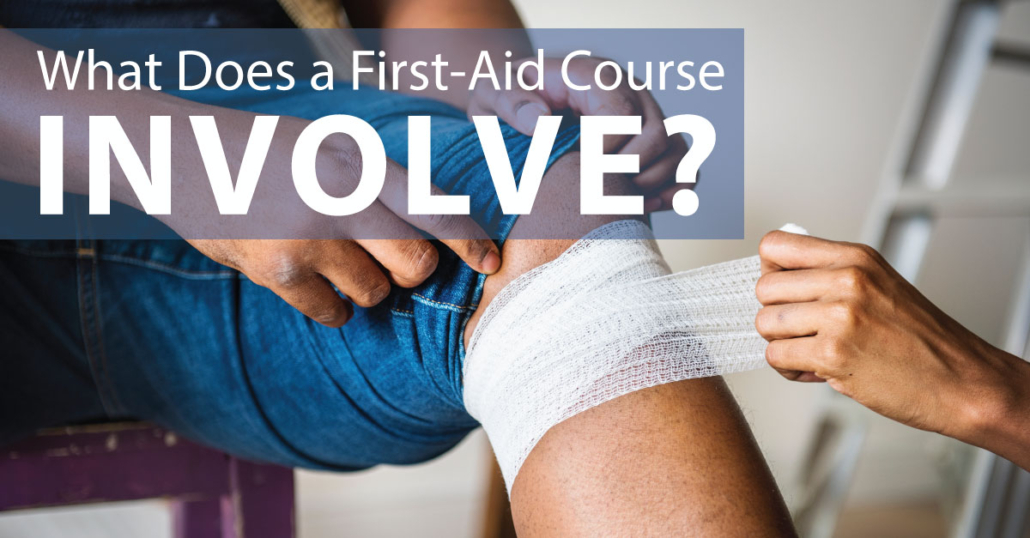Introduction
In our fast-paced globe, emergencies can strike without caution. Whether it's a minor injury, a medical emergency, or a life-threatening situation, understanding how to offer first aid can make all the difference. This is where a First Help course enters play. Many individuals might wonder what they can get from such training, and this post intends to shed light on that.
By enrolling in a First Aid and mouth-to-mouth resuscitation course, you do not simply discover bandaging wounds or executing CPR; you outfit yourself with important abilities that might conserve lives. So, what exactly will you learn in an extensive course? Let's dive into the details.
First Help Basics: What You'll Find out in an Extensive Course
Understanding Initial Aid
What is First Aid?
First aid refers to the preliminary help provided to someone struggling with an injury or health problem up until specialist clinical assistance gets here. It encompasses numerous strategies and skills ranging from simple wound like lifesaving techniques like mouth-to-mouth resuscitation (Cardiopulmonary Resuscitation).
Importance of First Aid Training
Why Should You Take a First Aid Course?
Taking a First Aid course is necessary for numerous reasons:
- Confidence: Understanding just how to react in emergency situations can infuse confidence. Life-Saving Skills: The ability to execute mouth-to-mouth resuscitation or aid with choking can save lives. Career Advancement: Lots of occupations require certification in first aid. Community Duty: Being trained ways you can help others effectively.
Overview of CPR
What is CPR?
CPR, or Cardiopulmonary Resuscitation, is an emergency situation treatment performed when somebody's heartbeat or breathing has actually quit. It integrates upper body compressions with rescue breaths to maintain blood circulation and oxygenation up until professional help arrives.
The Structure of a Comprehensive First Aid Course
What Does a First Aid Course Include?
An all-around First Help and mouth-to-mouth resuscitation course usually covers the complying with subjects:
Introduction to First Aid Legal and Honest Considerations Scene Safety Basic Life Support (BLS) CPR Techniques Choking Relief Wound Treatment Management Burn Treatment Managing Shock Recognizing Clinical Emergencies Using an Automated External Defibrillator (AED)Legal Facets of First Aid
Are There Legal Effects Involved in Providing First Aid?
Yes, providing emergency treatment does lug legal obligations called "Good Samaritan laws." These laws protect people who assist others in emergencies, offered their activities are reasonable and not reckless.
Scene Security: The Initial Step
How Do You Ensure Scene Safety?
Ensuring scene safety includes evaluating the atmosphere before coming close to the target:
- Look for prospective dangers (traffic, fire). Make sure it's risk-free for both you and the victim.
Basic Life Assistance (BLS)
What Role Does BLS Play in Emergency Situation Situations?
Basic Life Assistance consists of the fundamentals of maintaining life functions until additional clinical help arrives. This section covers important abilities such as:
- Checking responsiveness Activating emergency solutions Performing premium upper body compressions
Advanced mouth-to-mouth resuscitation Techniques
What Are Advanced Techniques Covered in CPR Courses?
Advanced methods may consist of:
- Two-rescuer CPR Use of barrier gadgets for rescue breaths Special considerations for babies and youngsters
Choking Relief Techniques
How Do You Aid Someone That is Choking?
Choking relief involves 2 critical strategies:

Wound Treatment Management
How Do You Correctly Take Care Of Wounds?
Effective wound administration includes:


- Cleaning the wound with saline or clean water. Applying antibiotic ointment. Covering it with sterile dressings.
Burn Treatment
What Are Effective Techniques for Treating Burns?
Burn treatment varies by level:
Cool the melt under running water. Cover it with non-stick dressings. Seek clinical attention for severe cases.Managing Shock
How Is Shock Acknowledged and Treated?
Recognizing shock consists of seeking signs like pale skin, fast pulse, or complication:
Lay the person down. Elevate their legs unless there are injuries avoiding this. Keep them relax up until help arrives.Recognizing Medical Emergencies
What Sorts of Medical Emergencies Must You Be Aware Of?
Common medical emergencies include:
- Heart assaults Stroke Severe allergic reactions Understanding these conditions assists you act quickly.
Using an Automated External Defibrillator (AED)
How Do You Utilize an AED Correctly?
Using an AED includes transforming it on, attaching pads according to pictures on the device, and adhering to voice motivates carefully.
Importance of Constant Learning
Why Is Continual Understanding Important in Emergency Treatment Training?
Continuous learning ensures you stay updated on ideal practices and new procedures in emergency treatment care.
FAQs About First Aid Courses
What Is Consisted of in a Standard Emergency Treatment Course?- A conventional program commonly covers standard life support, injury management, choking relief techniques, and lawful considerations.
- Most courses vary from 6 hours to 16 hours relying on the deepness of material covered.
- Yes, upon successful completion of the majority of courses, individuals receive a first help certificate, which is normally legitimate for two years.
- Yes! Numerous companies offer on-line courses that offer adaptable discovering environments while still being effective.
- Absolutely! Hands-on method is crucial for grasping abilities like chest compressions and making use of AEDs effectively.
- Generally, there are no age limitations; however, individuals must be mentally competent to find out these life-saving skills effectively.
Conclusion
Enrolling in an extensive emergency treatment course outfits individuals with vital knowledge that can conserve lives during emergencies-- whether at home, job, or out in public spaces! From recognizing basic life support treatments like CPR to finding out exactly how to manage injuries correctly or recognize indicators of shock-- these courses offer very useful training that any individual can benefit from!
As we browse via our lives filled with changability-- what better way than preparing ourselves via knowledge gained from structured training sessions concentrated on Adelaide First Aid Course Near Me conserving lives?
In final thought-- if you're considering occupying any kind of first-aid training-- never wait! Equip on your own today with these powerful tools due to the fact that readiness absolutely makes all the distinction when every 2nd counts!